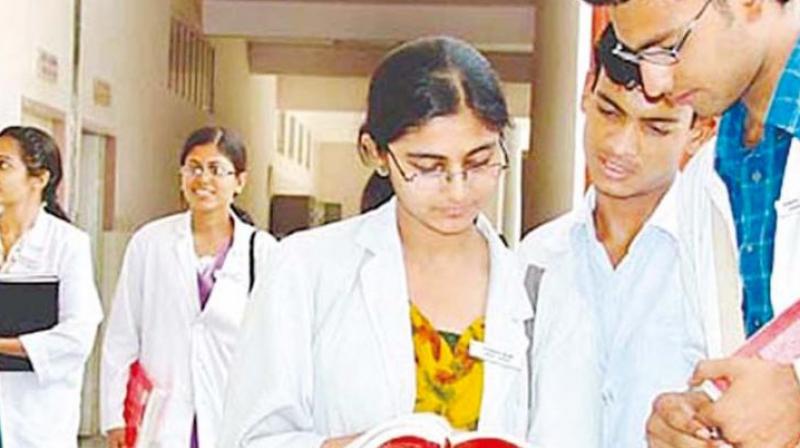Time to Reboot Medical education

A new physics of patient care is being created, which presents a compelling platform for the transformation of medical education. We are entering a new era in medical discovery focusing on precision medicine, which changes the paradigm for care delivery, drug discovery, and virtually everything else. In our constantly evolving discipline, what is true today often turns out to be not so true a few years later. It will not be long before personalised therapies for different diseases are based not on crude groupings like age, sex, or smoking habits, but on genomic studies of target organs.
But like many aspects of health care, medical education too evolves slowly. Presently, the curriculum is based on the Flexner Report, a review published in 1910 and hasn’t changed much since then. Sadly, while medicine has changed a lot in the past 100 years, medical training hasn’t.
What we need is to give students the tools to be adaptable, to be resilient, to problem-solve , push through some things, accept some things, and change other things. But instead students spend their first two years in the classroom memorising facts and the last two years, shadowing doctors in hospitals and clinics. The two-plus-two model doesn’t work as for one thing, there’s too much medical science for anyone to learn in two years. What Michigan and many other schools are trying to do now is prepare future doctors for the inevitable changes they will face throughout a long career.
Medical education has to be and must always be a dynamic, evolving process in order to serve the ever changing needs of patients, the healthcare system and our society at large, We already have a few game-changing technologies such as portable diagnostics, Artificial Intelligence in decision-making, augmented and virtual reality, social media and telemedicine, direct-to-consumer genomics, surgical and other robots and Nano robots at our disposal. But the education system is still to catch up. For instance, although telemedicine is increasingly ubiquitous in the clinical setting, students receive no training on its applications and limitations.
Moreover, with the advent of electronic health records and the continued march of medical research, which has generated reams of data , physicians must have the skills to sift through, synthesize, and act upon them. This means that all students need to graduate with a firm understanding of data science and statistics.
Another major change in medical education that we are seeing today in some parts of the world, aims at helping future doctors work as team players in small groups, and introducing practical patient exams using standardised patients, computerised mannequins, and virtual patients. For instance, in a classroom at the University of California, San Francisco, several groups of students practice teamwork by working together to solve a genetics problem.
I propose that medical schools join with business schools to build a twelve-week clinical rotation into the med -school curriculum that would teach new doctors leadership, team work, and data analytics. Currently, despite the growth of MD/MBA programmes, the dual degree is still young. And some clinicians regard leadership skills as necessary only for doctors in a formal management role and leadership is often construed as woolly, full of buzzwords, and a distraction from clinical endeavors. But earning an MBA can give a new doctor more clout in hospital decision-making.
Doctors as teachers: One of the most memorable quotes I’ve heard in medical school came during a grand rounds discussion on education: “Academic physicians are paid to see patients and are promoted for their research. No one cares about teaching.”
In theory, doctors who work in teaching hospitals are instructors and working with students and residents is part of their job. In practice, however, physicians have little incentive to care about trainees. Of course, many doctors are excellent teachers. But that is by coincidence rather than design.
Medical schools need to take steps to reward good teachers and help bad ones improve. Simply giving faculty a reason to care about teaching can dramatically improve the student experience. To conclude, medicine being a dynamic field that mandates continual innovation and improvement, medical education too must be held to the same standard.
Re-certification: However, even with the best of education, there’s evidence that the re-certification process can be an indicator of good quality health professionals. Without an independent entity verifying if a doctor is up-to-date and competent, how is a patient to know what he is walking into?
Physicians initially revolted against the idea of regularly proving that their medical skills are up-to-date. The controversy centres around the quizzes, tests, and projects that physicians must complete to demonstrate their fitness in the field. Under the re-certification process, physicians are required to earn a certain number of credits every few years and can pick from a long list of activities. Many hospitals today require doctors to complete these programmes and pass a day-long recertification exam every few years as a condition for employment.
The writer is former VC. Bangalore University

